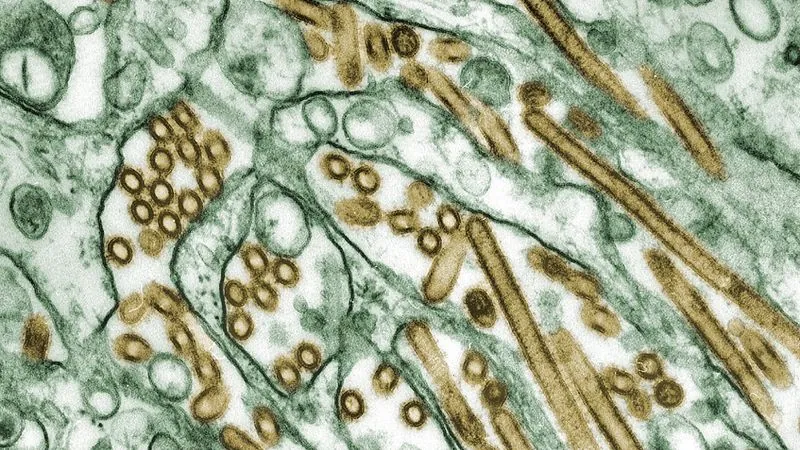
Alarming Bird Flu Outbreak Strikes California Dairy Farms Harder Than Anticipated
2024-10-08
Author: Chun
Overview of the Outbreak
A recent surge in bird flu cases in California has raised alarms among health officials and farmers alike. The state's health department has reported a third farmworker testing positive for the H5N1 strain of the virus, which, if confirmed by the US Centers for Disease Control and Prevention (CDC), would mark the 17th human case in the nation since March. The initial detection of the virus occurred in cows, leading to widespread concern.
Impact on California's Dairy Farms
The situation has proven particularly severe in California, where farmers and veterinarians have expressed that the impact on dairy herds is significantly worse compared to other states. Reports indicate that infection rates among affected herds have soared to alarming levels, with 50% to 60% of cows showing signs of illness, and mortality rates ranging from 10% to 15%. In contrast, other states report that only about 10% of cows in infected herds display symptoms, with death rates below 2%.
Government Response
Data from the California Department of Food and Agriculture indicates that since late August, more than 80 herds have been impacted by this outbreak. To combat the spread, the USDA has deployed a specialized team to assist in tracking the virus's movements and expanding testing efforts throughout the state.
Public Health Concerns
As concerns continue to grow, public health experts are sounding the alarm about the potential for more severe human cases. Dr. Jennifer Nuzzo, director of the Pandemic Center at Brown University, emphasized that with every new human case, the threat to public health escalates. "These reports only intensify my fears that if left unchecked, this virus could pose serious health risks to humans," she stated, warning that the potential for severe outcomes increases with rising infection rates.
Link to Human Cases
Investigators maintain that current cases among farmworkers are linked to direct contact with sick cattle, with symptoms primarily featuring mild conjunctivitis. However, the spread of the virus raises serious questions about the efficacy of safety protocols in place for farmworkers who interact with infected animals. Experts suggest that better protective measures are needed to avert future escalations.
Scientific Inquiry and Environmental Factors
The situation has prompted scientific inquiry into potential environmental factors, such as unusually high temperatures, and whether the virus could be mutating as it adapts to infect cows more effectively. The CDC has started sharing genetic sequences from the isolated viruses to aid in tracking the outbreak, although lack of contextual information regarding these sequences has hindered comprehensive analysis.
Conclusion
As California grapples with the ramifications of this bird flu outbreak, it stands as a stark reminder of the interconnectedness of animal health and public health. The dairy industry, being the largest in the nation, faces a critical challenge as investigators work diligently to limit further spread and ensure the safety of both the livestock and the workers tending to them. Stay tuned for ongoing updates, as this situation develops and experts analyze its implications for public health across the nation. Will we witness an increase in human infections, or can containment measures effectively halt this dangerous outbreak?





 Brasil (PT)
Brasil (PT)
 Canada (EN)
Canada (EN)
 Chile (ES)
Chile (ES)
 España (ES)
España (ES)
 France (FR)
France (FR)
 Hong Kong (EN)
Hong Kong (EN)
 Italia (IT)
Italia (IT)
 日本 (JA)
日本 (JA)
 Magyarország (HU)
Magyarország (HU)
 Norge (NO)
Norge (NO)
 Polska (PL)
Polska (PL)
 Schweiz (DE)
Schweiz (DE)
 Singapore (EN)
Singapore (EN)
 Sverige (SV)
Sverige (SV)
 Suomi (FI)
Suomi (FI)
 Türkiye (TR)
Türkiye (TR)